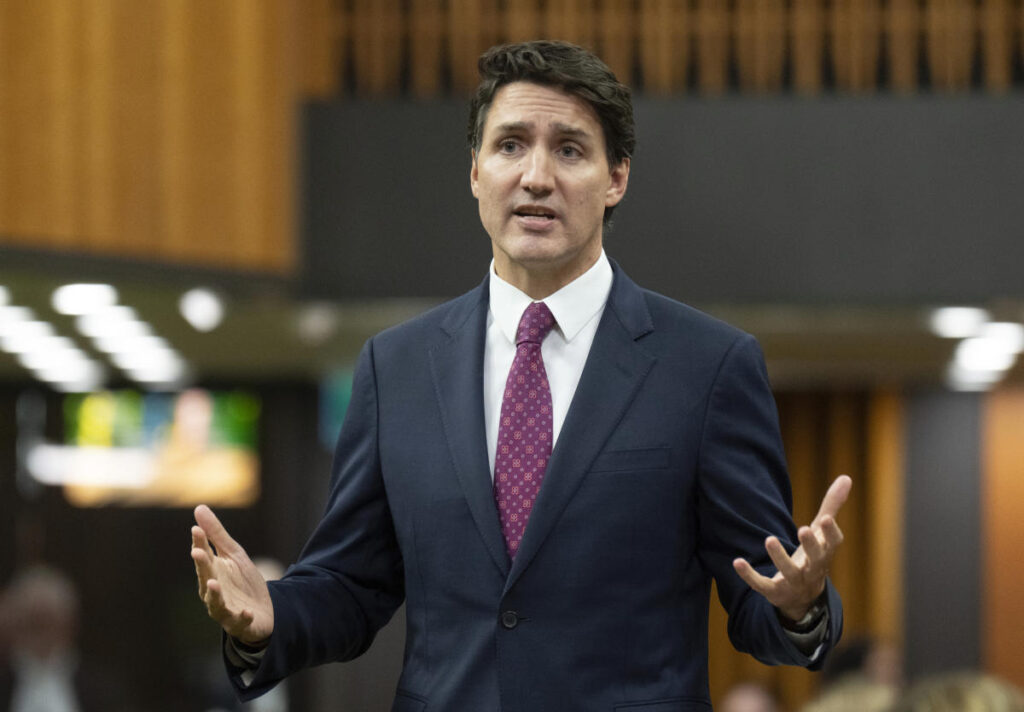Prime Minister Justin Trudeau faces a significant political challenge as discussions within his own Liberal Party intensify regarding his potential candidacy for a fourth term. Following a three-hour meeting with Liberal members of Parliament, it was revealed that over 20 lawmakers supported a letter asking Trudeau not to run again, a move indicative of growing dissent within the party. Among those who signed were outspoken MPs Ken McDonald, Wayne Long, and Sean Casey, expressing concerns about poor polling and the implications for their own political futures. Trudeau, who has previously indicated his intent to seek re-election, departed the meeting without addressing the media, leaving many to speculate on the party’s future under his leadership.
Despite the unrest, Trudeau maintained a public stance of unity within the party, insisting that the Liberals remain “strong and united.” Cabinet ministers, such as Employment Minister Randy Boissonnault, publicly backed the Prime Minister while acknowledging the internal struggles that distract from the party’s primary aim of serving Canadians. The divide among Liberal MPs highlights a critical moment in Canadian politics, with some members outright calling for a shift in leadership, while others, including those who did not sign the letter, remained supportive of Trudeau’s continued leadership. Ontario MP Yvan Baker emphasized that ultimately, the decision rests with Trudeau himself.
Trudeau’s leadership is increasingly under scrutiny, particularly following recent electoral disappointments in key districts where the Liberals have historically held seats. These losses, compounded by the rising cost of living impacting Canadians post-COVID-19, have led to a noticeable decline in the party’s public support. In a recent Nanos poll, the Liberals trailed the opposition Conservatives significantly, indicating a troubling trend for Trudeau as the party prepares for a potential federal election, which could be called anytime before October 2025. The need for consensus with other major parties in Parliament further complicates the Liberal agenda, particularly as calls for pension increases become a focal point for opposition forces.
Adding to the pressure, leaders from the Bloc Québécois, Conservatives, and the New Democratic Party have voiced intentions to capitalize on the Liberal government’s vulnerabilities, promising to collaborate on strategies to force an election if their demands are unmet. Trudeau’s tenure, initially marked by significant political triumphs reminiscent of his father’s legacy, is now overshadowed by difficulties that threaten his party’s future. The public’s growing frustration over economic challenges is a critical backdrop to the Liberal Party’s current plight.
Political analysts like Daniel Béland have remarked on the precarious position Trudeau now occupies. While his government enacted progressive changes, such as immigration reforms, the legalization of cannabis, and the introduction of a carbon tax, his diminishing popularity raises questions about his ability to lead effectively as the party navigates electoral uncertainty. Critics assert that while Trudeau rejuvenated the Liberal Party in 2015, his prolonged leadership could now represent a liability as voters express dissatisfaction and skepticism toward his administration’s performance.
Ultimately, Trudeau’s next steps will be pivotal, not only for his political future but also for the broader landscape of Canadian politics. The internal rift within the Liberal Party reflects a critical turning point, as members grapple with their leader’s declining fortunes amidst challenging socio-economic conditions. The coming months will likely dictate whether Trudeau can consolidate his position and rally his party for a renewed campaign or if pressure from within will necessitate a change in leadership—a decision that could shape the dynamics heading into the anticipated federal election.

